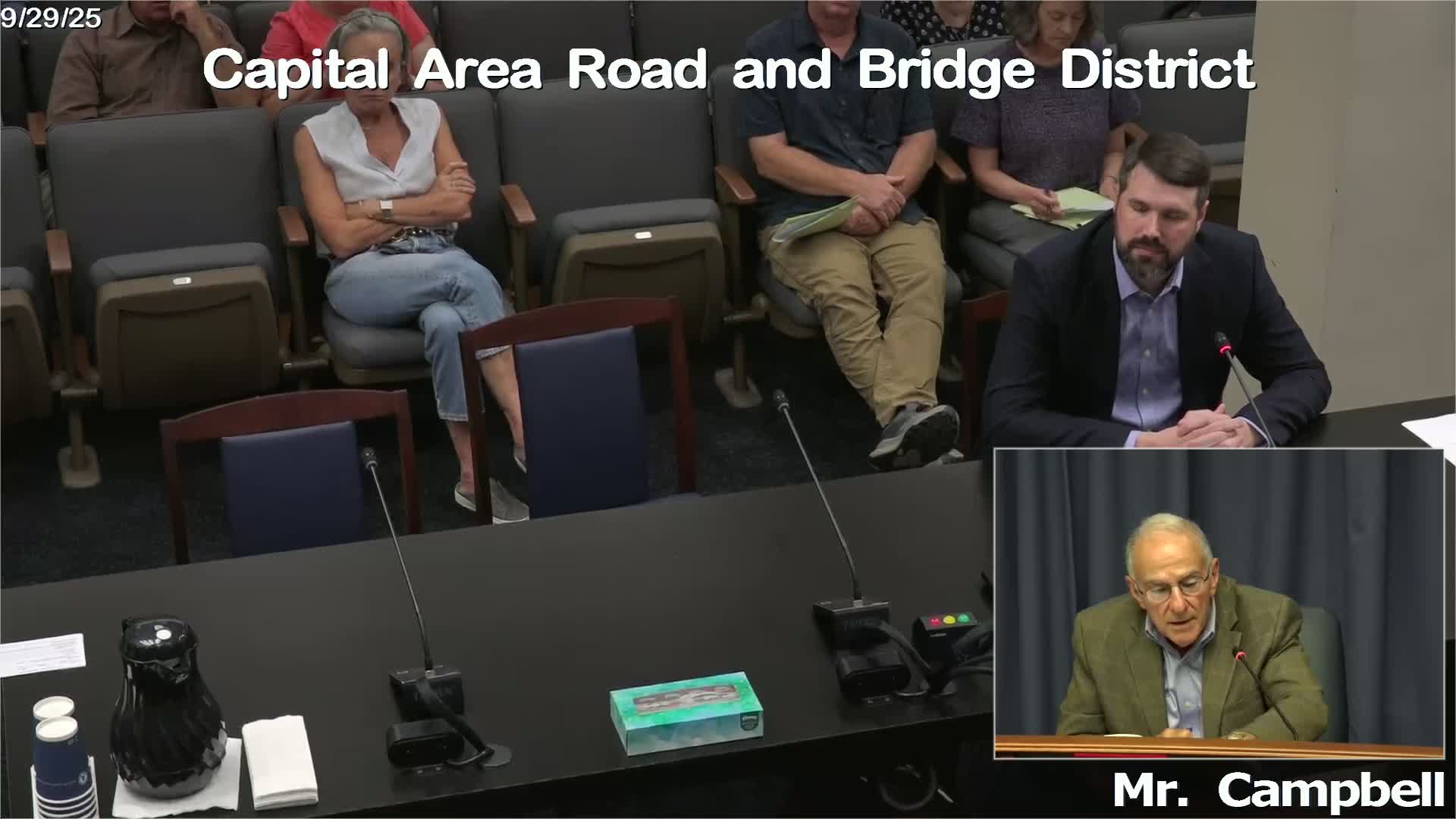Calcasieu Bridge Project Discusses 50-Year Tolling and Funding Options
September 29, 2025 | 2025 Legislature LA, Louisiana
This article was created by AI summarizing key points discussed. AI makes mistakes, so for full details and context, please refer to the video of the full meeting. Please report any errors so we can fix them. Report an error »

During a recent meeting of the Senate Capital Area Road and Bridge District, significant discussions centered around the financing and operational timeline for the Calcasieu Bridge Project, which is poised to impact local infrastructure and community connectivity.
One of the key points raised was the tolling period for the bridge, which is set for a 50-year concession. This means that while tolls will be collected for several decades, they are not permanent. At the end of this period, the bridge will undergo an inspection to ensure it meets required standards before the tolling equipment is removed and the bridge is handed back to public authorities. This "handback" process is crucial for ensuring that the infrastructure remains in good condition for future use.
The meeting also highlighted the timeline of the National Environmental Policy Act (NEPA) process, which began in February 2020. Delays were noted due to the discovery of hazardous materials, but a record of decision was granted on January 30, 2024. The public-private partnership (PPP) process for the project started in December 2020, indicating a proactive approach to financing despite environmental challenges.
Financial projections for the project suggest that the total revenue generated over the concession period will be in the billions, reflecting the substantial investment required to build and maintain the bridge. The financing model involves a combination of low-interest loans and private capital, with the developer assuming significant risk.
In addition to tolling and financing, the board discussed the need to explore various funding sources for the bridge, including potential sales taxes or parcel fees. Each of the five parishes involved will have the opportunity to vote on these funding mechanisms, ensuring community input in the decision-making process.
As the project moves forward, the board emphasized the importance of engaging with the public to gauge support for different funding options. This outreach will be essential in determining how best to finance the bridge while addressing community needs and concerns.
In conclusion, the discussions from this meeting underscore the complexity and significance of the Calcasieu Bridge Project, which aims to enhance transportation infrastructure in the region. As planning progresses, the focus will remain on ensuring that the project meets both financial and community expectations, paving the way for improved connectivity in the area.
One of the key points raised was the tolling period for the bridge, which is set for a 50-year concession. This means that while tolls will be collected for several decades, they are not permanent. At the end of this period, the bridge will undergo an inspection to ensure it meets required standards before the tolling equipment is removed and the bridge is handed back to public authorities. This "handback" process is crucial for ensuring that the infrastructure remains in good condition for future use.
The meeting also highlighted the timeline of the National Environmental Policy Act (NEPA) process, which began in February 2020. Delays were noted due to the discovery of hazardous materials, but a record of decision was granted on January 30, 2024. The public-private partnership (PPP) process for the project started in December 2020, indicating a proactive approach to financing despite environmental challenges.
Financial projections for the project suggest that the total revenue generated over the concession period will be in the billions, reflecting the substantial investment required to build and maintain the bridge. The financing model involves a combination of low-interest loans and private capital, with the developer assuming significant risk.
In addition to tolling and financing, the board discussed the need to explore various funding sources for the bridge, including potential sales taxes or parcel fees. Each of the five parishes involved will have the opportunity to vote on these funding mechanisms, ensuring community input in the decision-making process.
As the project moves forward, the board emphasized the importance of engaging with the public to gauge support for different funding options. This outreach will be essential in determining how best to finance the bridge while addressing community needs and concerns.
In conclusion, the discussions from this meeting underscore the complexity and significance of the Calcasieu Bridge Project, which aims to enhance transportation infrastructure in the region. As planning progresses, the focus will remain on ensuring that the project meets both financial and community expectations, paving the way for improved connectivity in the area.
View full meeting
This article is based on a recent meeting—watch the full video and explore the complete transcript for deeper insights into the discussion.
View full meeting
